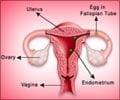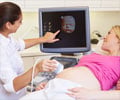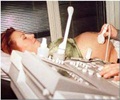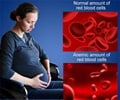Diagnosing and counselling of pregnant women carrying fetuses with a specific type of chromosomal aberration at risk of developing brain disorders such as autism and mental retardation will soon be possible thanks to a chromosome study.

‘Results of a new chromosome study can greatly influence the diagnosing and counselling of pregnant women carrying fetuses with a specific type of chromosomal aberration at risk of developing brain disorders.’





'We have identified all the people who, as fetuses, were diagnosed with such a chromosomal aberration in Denmark, and we can see that they more often have developed a disease. The previous study, which found a risk of 6-9 per cent, mainly looked at congenital malformations and did not include neurocognitive diseases such as autism and mental retardation, which often emerge at a later stage. We have therefore been unaware of the extent of the total risk', says one of the authors of the study, Iben Bache, who is associate professor at the Department of Cellular and Molecular Medicine at the Faculty of Health and Medical Sciences and medical doctor at the Department of Clinical Genetics at Rigshospitalet. Chromosomal Material that Has been Exchanged
'We call these aberrations balanced chromosomal rearrangements, because all the genetic material is still there. There is neither a loss nor a gain of genetic material. The problem is that parts of the genetic material have been exchanged, and that might have caused disruption of an important gene', says Iben Bache.
The study is the largest systematic survey of these rare chromosomal aberrations in fetuses, and it also evaluates the methods that can be used for examining them. These chromosomal abnormalities are diagnosed through chorionic villus sampling or amniocentesis by classical chromosomal analysis, where the genetic material is examined in a microscope. This method has been used for the last 40 years, and it is still the method used in most pregnancies globally.
However, in Danish hospitals the method is increasingly being replaced with another method, chromosomal microarray, which exclusively tests for loss and gain of the genetic material. Chromosomal microarray therefore cannot discover the rare balanced aberrations studied here. In contrast, the study reveals that modern genome sequencing in most cases will be able not only to detect these balanced chromosomal aberrations but also show whether genes have been damaged.
Advertisement
The researchers then visited the majority of the persons to do a health examination and collect blood samples for modern genetic analyses. By comparing the health data of the group with the chromosomal aberrations and the control group, the researchers found two-three times higher risk of developing a neurocognitive disorder in the group with the chromosomal aberrations.
Advertisement
'We have not known which analyses to use to discriminate the fetuses that will be healthy from those that will eventually develop disorders. Our study shows that by using the new sequencing technologies we can in fact discriminate in a number of cases. This may greatly affect the diagnosing and counselling of pregnant women carrying fetuses with this specific type of chromosomal aberration in the future', says Iben Bache.
Source-Eurekalert















